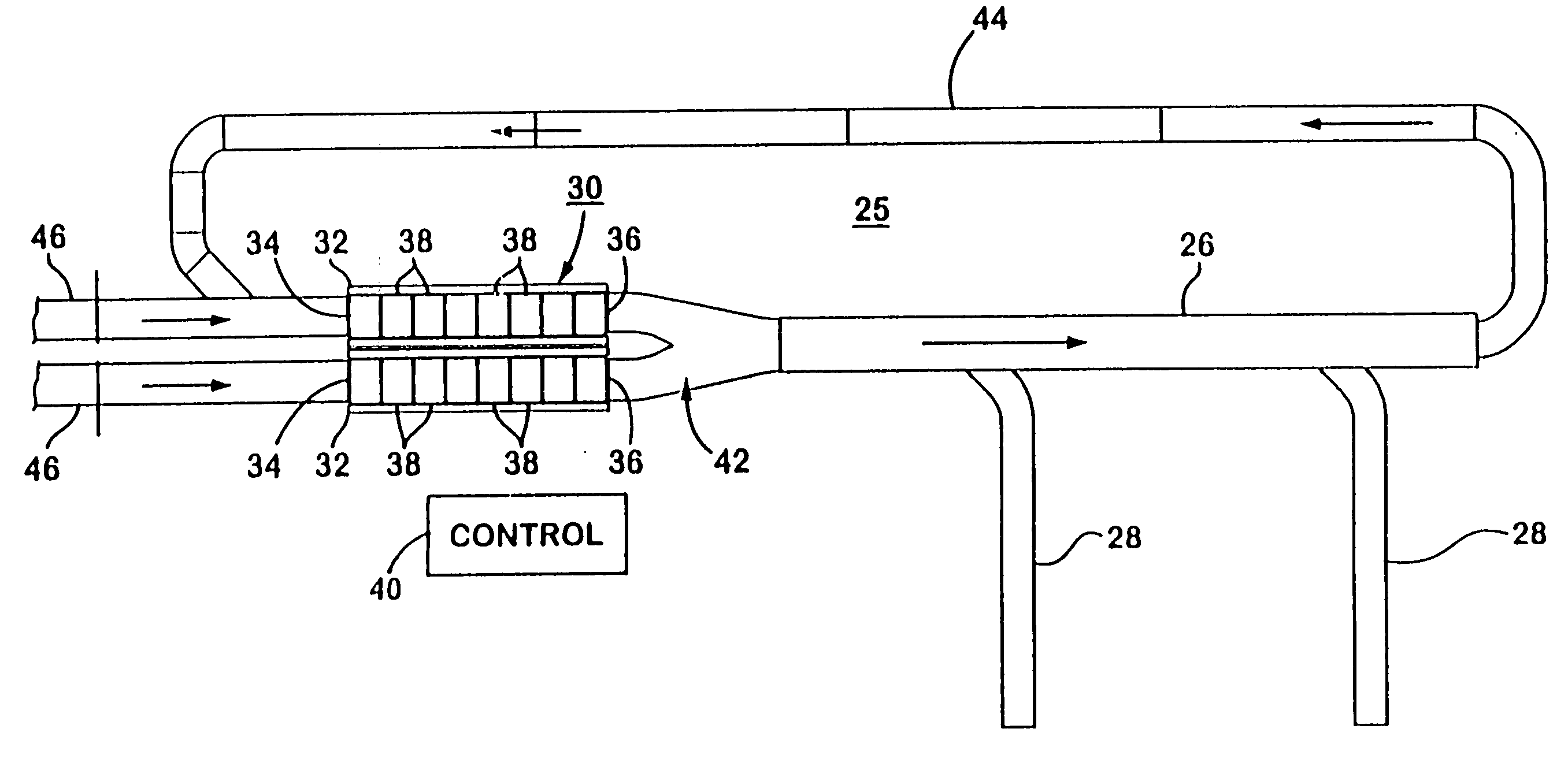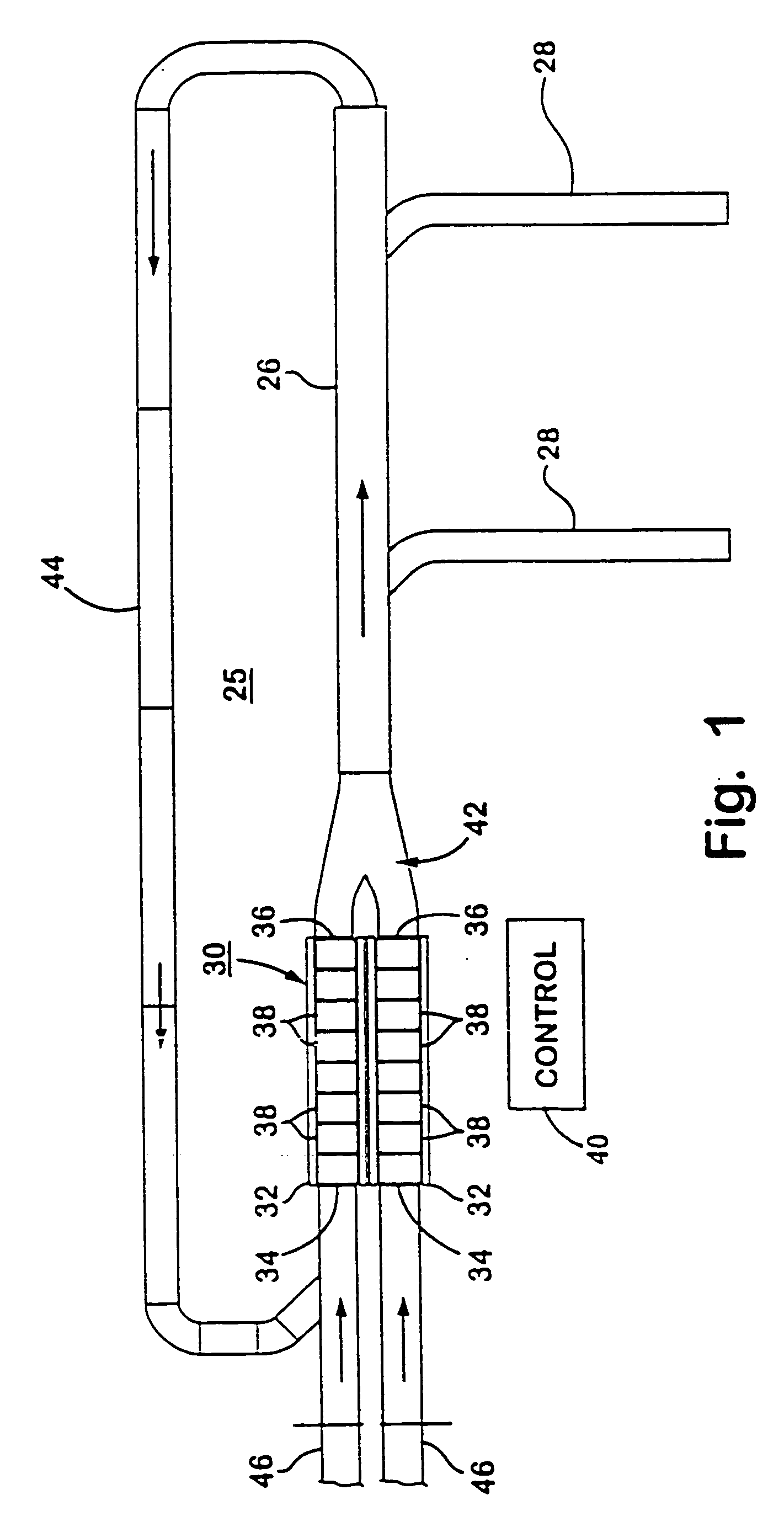High rate induction system
a sorting system and high-rate technology, applied in the direction of sorting, mechanical conveyors, conveyor parts, etc., can solve the problems of inability to the sorter becomes starved, and the sorter cannot meet the rated throughput, so as to improve the performance of the sorter and improve the supply of products.
- Summary
- Abstract
- Description
- Claims
- Application Information
AI Technical Summary
Benefits of technology
Problems solved by technology
Method used
Image
Examples
Embodiment Construction
[0037] Referring now specifically to the drawings, and the illustrative embodiments depicted therein, a high rate induction system 30 is used with a sortation system 25 including a continuous member 26 and a plurality of sort destinations 28 for receiving products discharged from the continuous member (FIG. 1). In the illustrative embodiment, continuous member 26 is a sortation conveyor and, preferably, a positive displacement sortation conveyor utilizing pusher shoes which travel with the conveying surface, as disclosed in commonly assigned U.S. Pat. No. 5,127,510 entitled MODULAR DIVERTER SHOE AND SLAT CONSTRUCTION, the disclosure of which is hereby incorporated herein by reference. However, the invention is useful with other types of sortation systems known in the art such as tilt wheel sorters, transverse belt sorters, stationary pusher sorters, and the like. Sort destinations 28 may include takeaway conveyors, chutes, or the like, on one or both sides of continuous member 26.
[...
PUM
 Login to View More
Login to View More Abstract
Description
Claims
Application Information
 Login to View More
Login to View More - R&D
- Intellectual Property
- Life Sciences
- Materials
- Tech Scout
- Unparalleled Data Quality
- Higher Quality Content
- 60% Fewer Hallucinations
Browse by: Latest US Patents, China's latest patents, Technical Efficacy Thesaurus, Application Domain, Technology Topic, Popular Technical Reports.
© 2025 PatSnap. All rights reserved.Legal|Privacy policy|Modern Slavery Act Transparency Statement|Sitemap|About US| Contact US: help@patsnap.com



